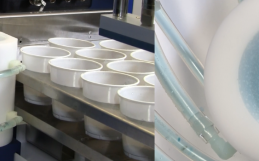MANTECH is proud to offer this presentation summarizing our analytical product line followed by a demonstration of our MT-100 Analyzer for pH, Conductivity and Alkalinity.
MANTECH’s product home pages are linked below:
PeCOD COD/BOD Analyzer
PeCOD Optimized TOC Analyzer
MT Automated Environmental Titration System
BOD Pro Biochemical Oxygen Demand Analyzer
MANTECH manufactures laboratory, process and portable analyzers for water, soil and food. Analyzers are utilized in Factories, Universities, Accredited Laboratories and Field Operations. Trusted in more than 50 countries with >2,700 analyzers generating >600,000 results everyday, MANTECH analyzers deliver high quality analytical results for actionable decision making.
Whether your laboratory requires a simple pH system or a system with eight parameters, MANTECH will deliver. We realize each laboratory is unique and as a result, our systems are tailor configured with off-the-shelf modules to meet your requirements for sample volume, parameters and sample size. Each system is fully automated by easy to use software and robust robotics.
MANTECH has a variety of biochemical oxygen demand (BOD) systems to best suit the needs of your laboratory. Whether you need manual or automated, big or small, simple or complex, MANTECH can create the ideal BOD solution for your laboratory. MANTECH’s Automated BOD analysis systems are robust, come with easy to use software, and provide accurate results that stand the test of time.
MANTECH’s revolutionary PeCOD® COD/BOD Analyzer technology provides accurate chemical oxygen demand (COD) or biochemical oxygen demand (BOD) results in 10 minutes — without the use of harmful chemicals including dichromate and mercury. Highly adaptable for wastewater and drinking water applications, the PeCOD® COD Analyzer’s patented nanotechnology-based approach to COD analysis will save you time and money while protecting the environment and the health and safety of your workers. The PeCOD® Analyzer technology also measures the chemical reactivity and associated oxidative changes in Natural Organic Matter (NOM). As a result it is more sensitive than Total Organic Carbon (TOC) and UV254 to changing NOM concentrations in source and treated drinking waters.







